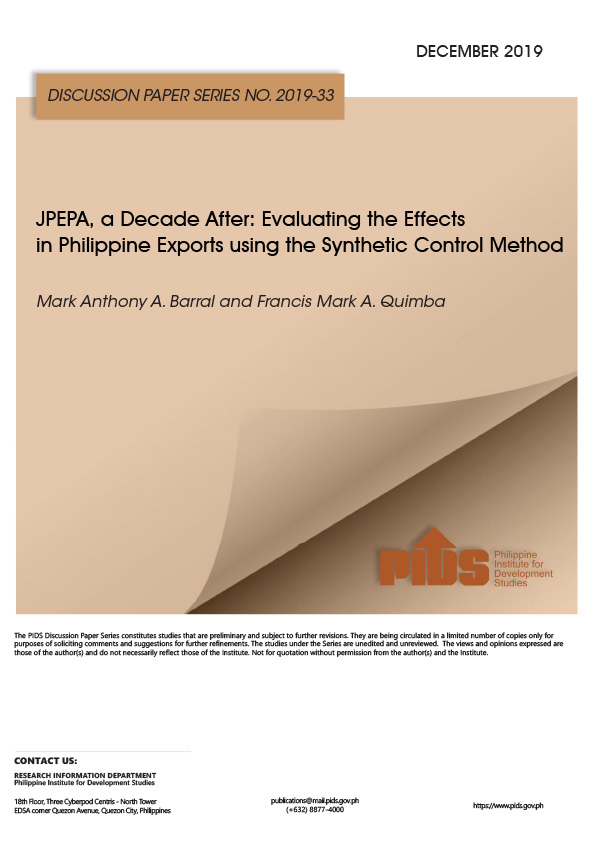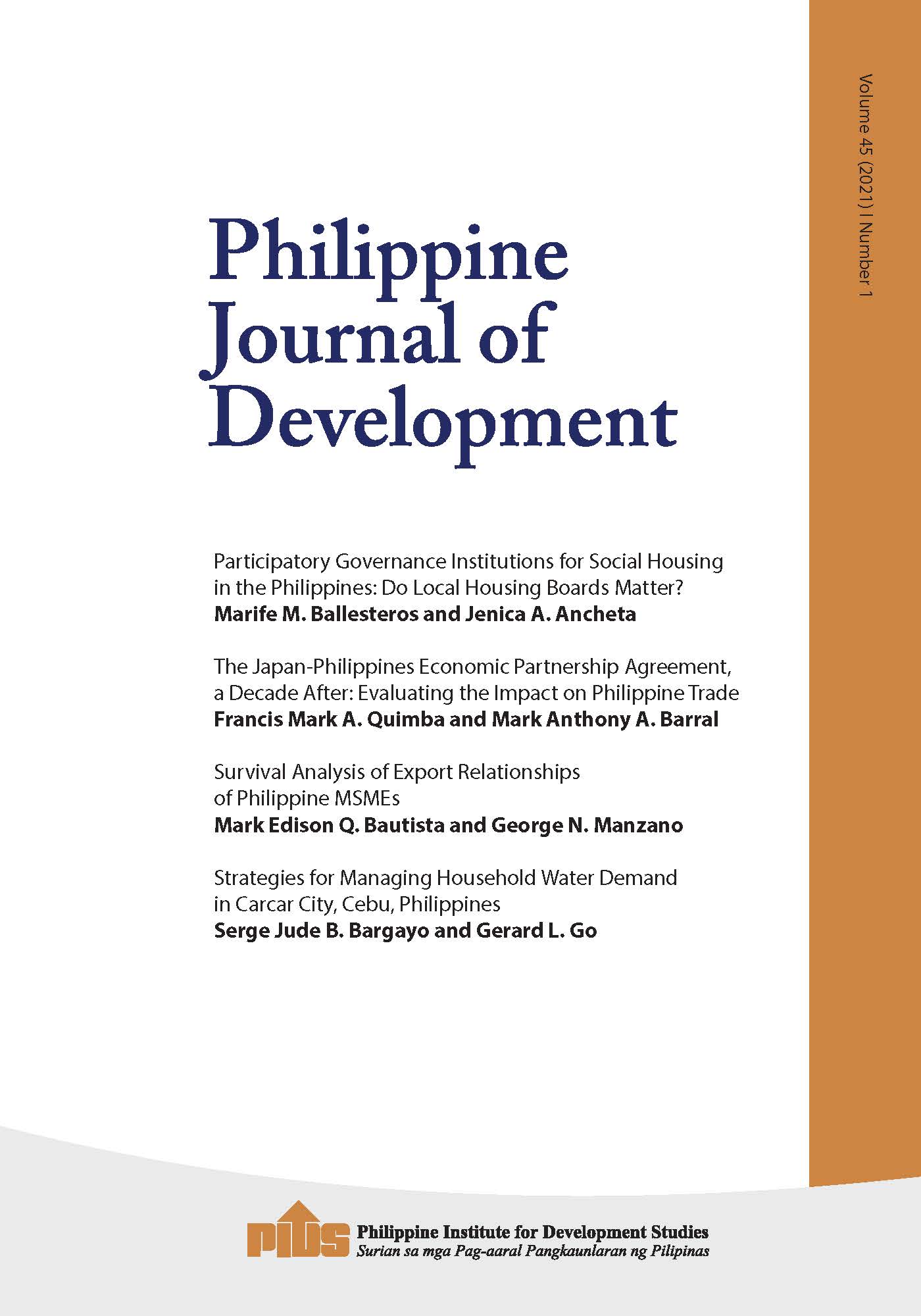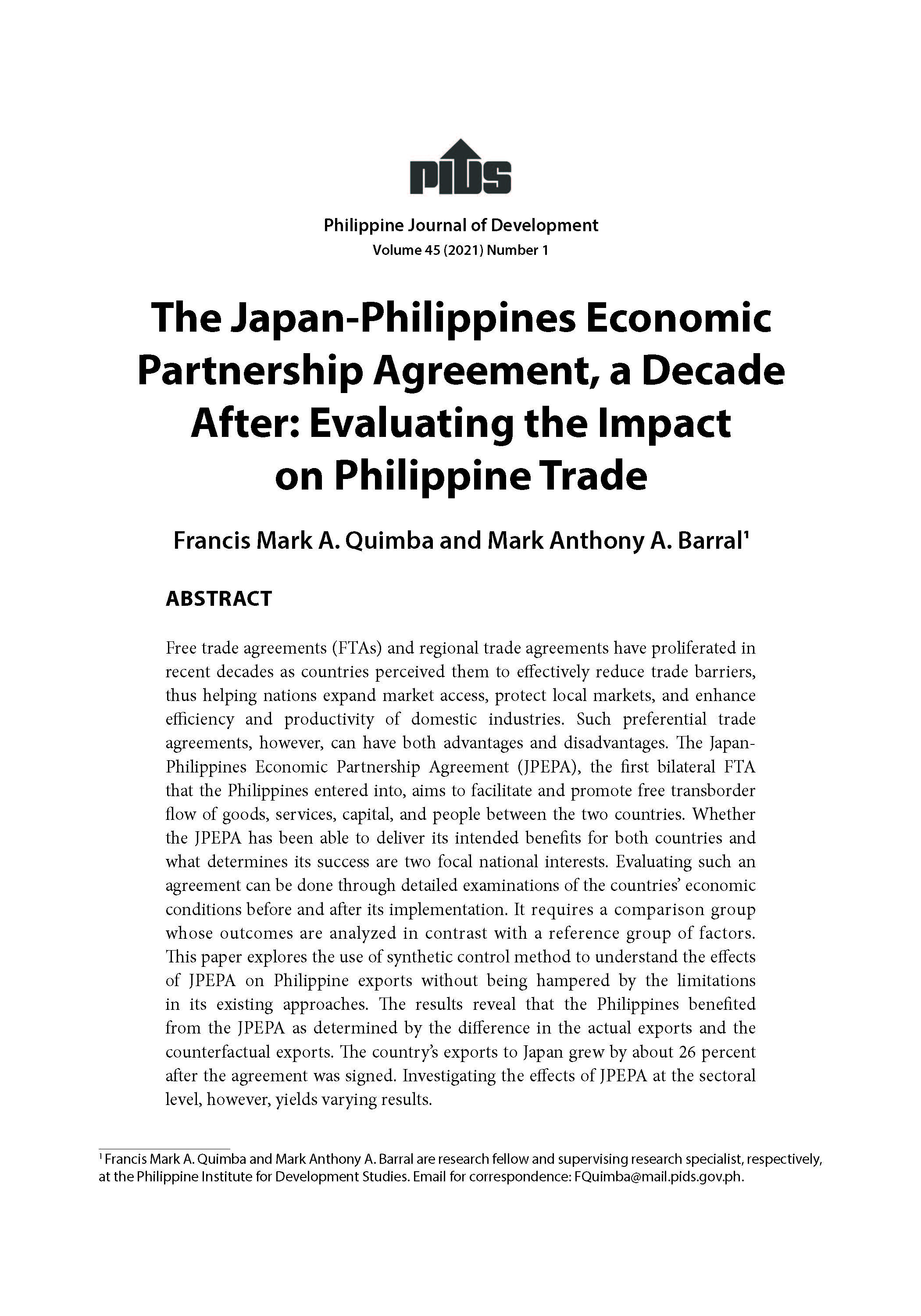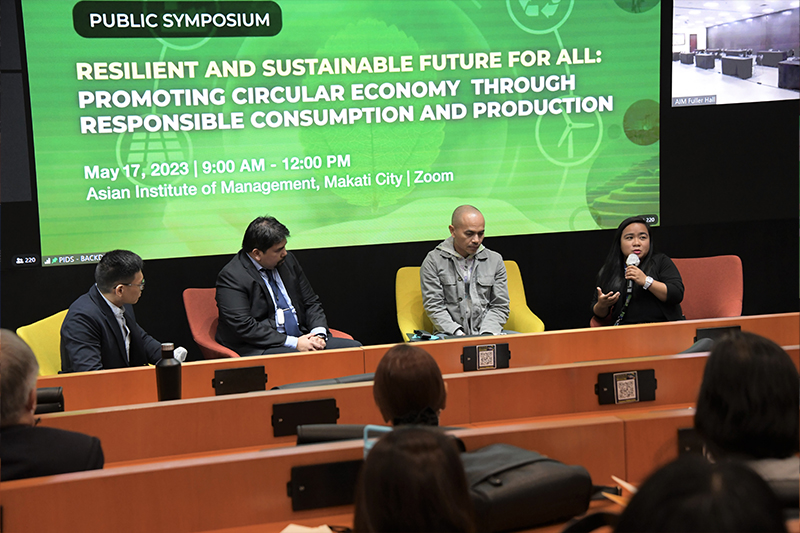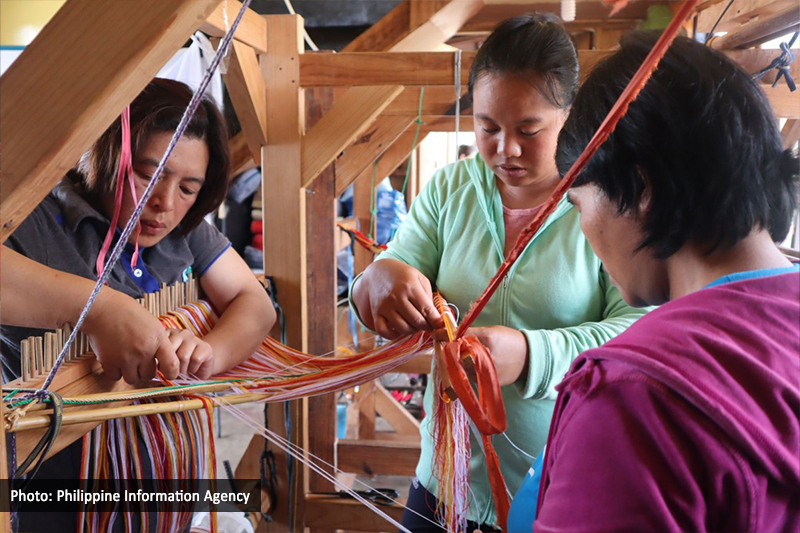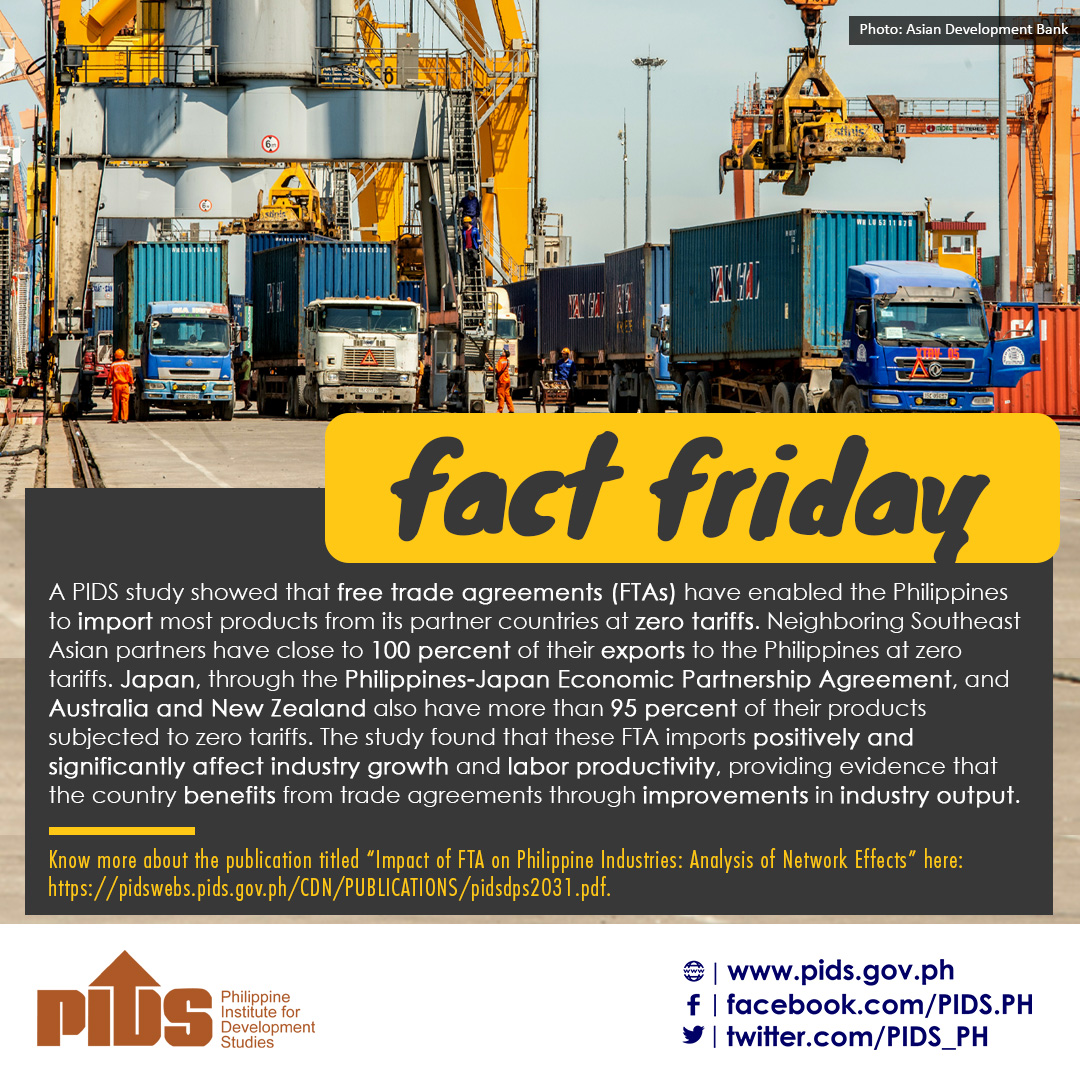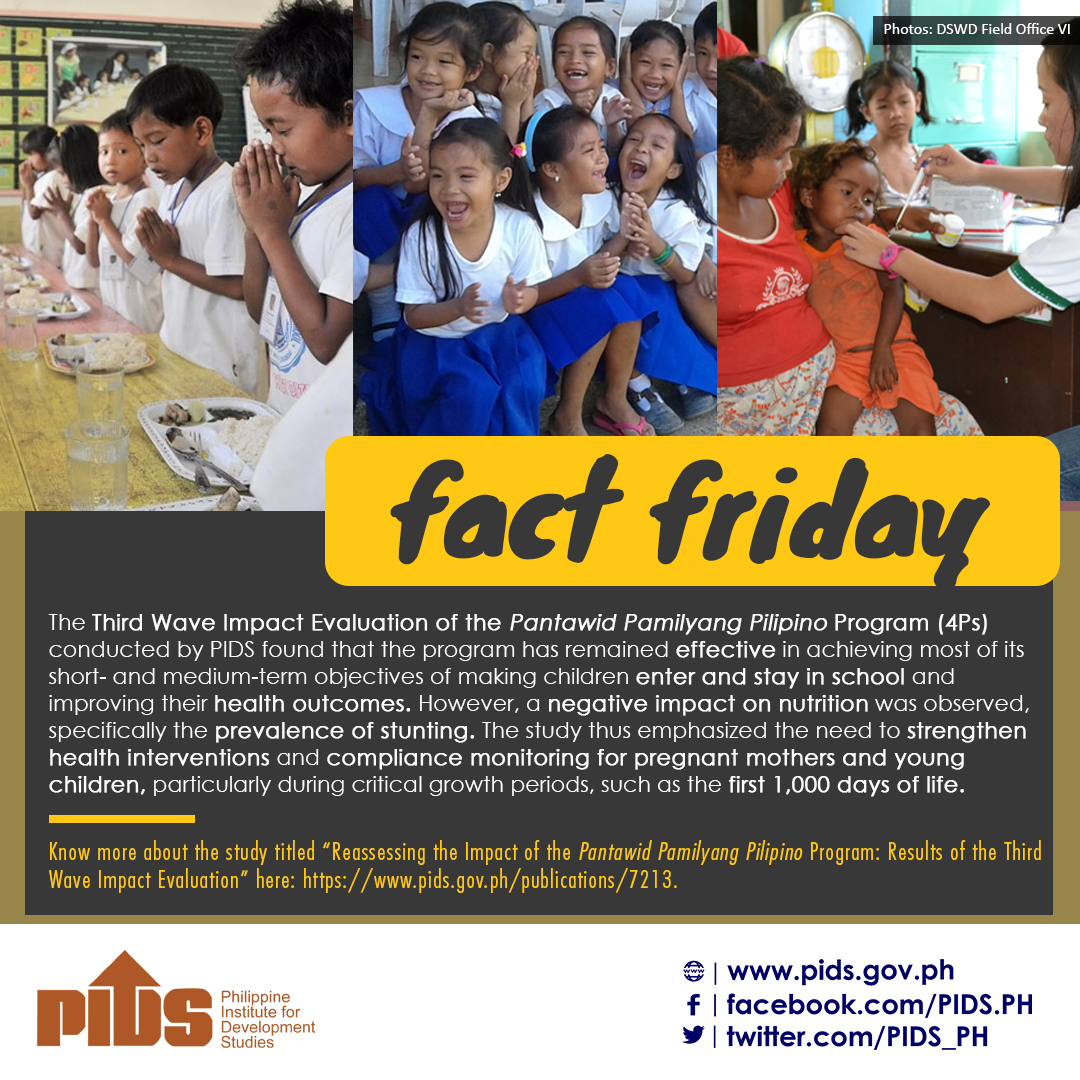
The Japan-Philippines Economic Partnership Agreement or JPEPA had minimal impacts on the growth of Philippine exports after more than a decade of enforcement.
This was according to a study published by state think tank Philippine Institute for Development Studies (PIDS) that looked at the effects of JPEPA on Philippine exports to Japan. Using the synthetic control method (SCM), the study assessed the counterfactual of Philippine exports to Japan to get an idea of how it would have performed if the JPEPA had not been implemented.
Entered into force in December 2008, the JPEPA is an economic agreement between Japan and the Philippines to facilitate and promote free transborder flow of goods and services, capital, and people across the two countries.
Authors Mark Anthony Barral and Francis Mark Quimba, PIDS research associate and PIDS senior research fellow, respectively, said that prior to the signing of the agreement, “the Philippines’ total value of trade with Japan amounted to USD 15,188 million in 2006.”
Without JPEPA, the Philippine export was projected to increase up to 13 percent in 2011. With the agreement, it was expected to reach between 16 and 20 percent from 9 to 9.5 percent initially.
However, the authors noted that the agreement did not immediately bring improvements to certain sectors, particularly agriculture and nonmetal industries, plastic and rubber, textiles, and electrical machinery.
“For these sectors, the counterfactual exports have been greater than the actual exports for some years immediately after [the implementation of] JPEPA,” the study added, noting that the latter only increased after some time.
Agriculture exports, for instance, dropped from its initial position of being the 7th export in 2006 to 2008 to 16th in 2010 to 2012, then 14th in 2016 to 2018.
Similarly, the nonmetals immediately dropped from being the 2nd export in 2006 to 2008 to 12th after the agreement, and remained more or less in the same position for the succeeding years.
The authors also found that the counterfactual exports of machinery and mechanical appliances were “consistently higher than actual exports to Japan”, implying that they “seem to have not benefited from JPEPA”.
Despite these, Barral and Quimba said that some industries did well after the agreement had been enforced. Vehicles saw the largest leap—from being the 10th export in 2006 to 2008 to 4th in 2016 to 2018. Food manufacturing, minerals, chemicals, and wood products also saw immediate improvements.
Based on these findings, the authors concluded that tariffs may not be the only determinant of Philippine exports to Japan as other factors come into play.
These include domestic issues, such as “deficient technological know-how, high shipping and packaging costs, high labor and power costs, lack of credit facilities, problems on raw materials sourcing, insufficient infrastructure facilities, and lack of government support”.
The authors recommend addressing these issues as well as “the nontariff barriers to the Japanese market using the mechanisms available in JPEPA”.
They added that the high trade costs brought about by the distance between the two countries could be resolved by improving the country’s logistics through further streamlining of business permit and licensing procedures for micro, small, and medium enterprises. The study noted that the Department of Trade and Industry has already taken steps to make this possible. ###
This press release is based on the PIDS discussion paper titled, “JPEPA, a Decade After: Evaluating the Effects in Philippine Exports using the Synthetic Control Method”.
This was according to a study published by state think tank Philippine Institute for Development Studies (PIDS) that looked at the effects of JPEPA on Philippine exports to Japan. Using the synthetic control method (SCM), the study assessed the counterfactual of Philippine exports to Japan to get an idea of how it would have performed if the JPEPA had not been implemented.
Entered into force in December 2008, the JPEPA is an economic agreement between Japan and the Philippines to facilitate and promote free transborder flow of goods and services, capital, and people across the two countries.
Authors Mark Anthony Barral and Francis Mark Quimba, PIDS research associate and PIDS senior research fellow, respectively, said that prior to the signing of the agreement, “the Philippines’ total value of trade with Japan amounted to USD 15,188 million in 2006.”
Without JPEPA, the Philippine export was projected to increase up to 13 percent in 2011. With the agreement, it was expected to reach between 16 and 20 percent from 9 to 9.5 percent initially.
However, the authors noted that the agreement did not immediately bring improvements to certain sectors, particularly agriculture and nonmetal industries, plastic and rubber, textiles, and electrical machinery.
“For these sectors, the counterfactual exports have been greater than the actual exports for some years immediately after [the implementation of] JPEPA,” the study added, noting that the latter only increased after some time.
Agriculture exports, for instance, dropped from its initial position of being the 7th export in 2006 to 2008 to 16th in 2010 to 2012, then 14th in 2016 to 2018.
Similarly, the nonmetals immediately dropped from being the 2nd export in 2006 to 2008 to 12th after the agreement, and remained more or less in the same position for the succeeding years.
The authors also found that the counterfactual exports of machinery and mechanical appliances were “consistently higher than actual exports to Japan”, implying that they “seem to have not benefited from JPEPA”.
Despite these, Barral and Quimba said that some industries did well after the agreement had been enforced. Vehicles saw the largest leap—from being the 10th export in 2006 to 2008 to 4th in 2016 to 2018. Food manufacturing, minerals, chemicals, and wood products also saw immediate improvements.
Based on these findings, the authors concluded that tariffs may not be the only determinant of Philippine exports to Japan as other factors come into play.
These include domestic issues, such as “deficient technological know-how, high shipping and packaging costs, high labor and power costs, lack of credit facilities, problems on raw materials sourcing, insufficient infrastructure facilities, and lack of government support”.
The authors recommend addressing these issues as well as “the nontariff barriers to the Japanese market using the mechanisms available in JPEPA”.
They added that the high trade costs brought about by the distance between the two countries could be resolved by improving the country’s logistics through further streamlining of business permit and licensing procedures for micro, small, and medium enterprises. The study noted that the Department of Trade and Industry has already taken steps to make this possible. ###
This press release is based on the PIDS discussion paper titled, “JPEPA, a Decade After: Evaluating the Effects in Philippine Exports using the Synthetic Control Method”.

